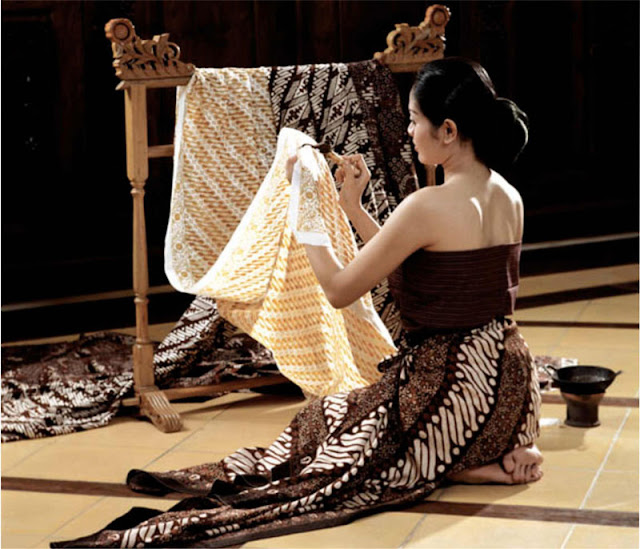
-
Bahal temple (Indonesian: Candi Bahal ), Biaro Bahal, or Candi Portibi is a Vajrayana Buddhist temple (candi) compl...
-
Ternate Sultan Mosque is located at visit Sultan Khairun region, village of Soa Sio, District of North Ternate, Ternate,...
-
Fine Arts and Ceramic Building Museum was built in 1870. At the beginning the building was used as Dutch Judiciary Institution or R...
-
The Sasmita Loka Ahmad Yani Museum houses a collection from Ahmad Yani and some dioramas about the G-30-S/PKI, 30 Septe...
-
Museum Balanga Address: Jalan Cilik, Palangka Raya, Central Kalimantan, Indonesia, ID The Museum Balanga is located within the city...
-
Museum Balla Lompoa (Beteng Sungguminasa) Address: Beteng Sungguminasa, Jalan Kh Wahid Hasyim, Makassar, Sulawesi, ...
-
Museum Negeri Propinsi Sulawesi Utara Address: Jalan Supratman, Manado, Sulawesi, Indonesia, ID Although the majority of the attractio...
-
If you want to get a glimpse of Florenese cultural and natural history, prehistory, as well as browse through unique and sometimes cu...
-
Masjid gede Kauman (Great Mosque of Kauman) is a historical mosque located west of Keraton North Square built as the main structure f...
-
Trinil Museum is located about 12 kilometers in the west of Ngawi is in same direction of Soerjo monument. It constitutes the complex of m...
- Yunita Arianti
- twitter @yunitarianti skype: yunitarianti instagram: Yunitarianti
-
▼
2012
(25)
-
▼
Oktober
(25)
- Museum Negeri Sulawesi Utara Manado
- Museum Waja Sampai Ka Puting
- Ngawi Trinil Museum
- Bali Provincial Museum
- Denpasar Fingerprint Painting Museum
- Yogyakarta, Great Mosque of Kauman
- Yogyakarta, Batik Museum
- Jakarta, Ceramics and Fine Arts Museum
- Jakarta, Ahmad Yani Sasmitaloka Museum
- Museum Lapawawoi Watampone, Pulau Selayar, South S...
- Museum Balla Lompoa (Beteng Sungguminasa) Makassar
- East Java, Sunan Drajat Museum
- East Java, Submarine Museum Surabaya
- Candi Bahal, Biaro Bahal, or Candi Portibi ,Bahal ...
- Museum Huta Bolon Simanindo Danau Toba,North Sumatra
- Museum Lombok Mataram Provincial State Museum
- Flores Maumere Ledalero museum
- Moluccas Ambon Old State Mosque Wapauwe Kaitetu
- Sultan Ternate Mosque
- Mulawarman Museum Tenggarong, East Kalimantan
- Museum Balanga Palangka Raya, Central Kalimantan
- Cenderawasih Museum
- East Papua, Museum of Culture and Progress, Agats,...
- Bajra Sandhi Museum
- Batur Volcano Museum
-
▼
Oktober
(25)
-
Bahal temple (Indonesian: Candi Bahal ), Biaro Bahal, or Candi Portibi is a Vajrayana Buddhist temple (candi) compl...
-
Ternate Sultan Mosque is located at visit Sultan Khairun region, village of Soa Sio, District of North Ternate, Ternate,...
-
Fine Arts and Ceramic Building Museum was built in 1870. At the beginning the building was used as Dutch Judiciary Institution or R...
-
The Sasmita Loka Ahmad Yani Museum houses a collection from Ahmad Yani and some dioramas about the G-30-S/PKI, 30 Septe...
-
Museum Balanga Address: Jalan Cilik, Palangka Raya, Central Kalimantan, Indonesia, ID The Museum Balanga is located within the city...
-
Museum Balla Lompoa (Beteng Sungguminasa) Address: Beteng Sungguminasa, Jalan Kh Wahid Hasyim, Makassar, Sulawesi, ...
-
Museum Negeri Propinsi Sulawesi Utara Address: Jalan Supratman, Manado, Sulawesi, Indonesia, ID Although the majority of the attractio...
-
If you want to get a glimpse of Florenese cultural and natural history, prehistory, as well as browse through unique and sometimes cu...
-
Masjid gede Kauman (Great Mosque of Kauman) is a historical mosque located west of Keraton North Square built as the main structure f...
-
Trinil Museum is located about 12 kilometers in the west of Ngawi is in same direction of Soerjo monument. It constitutes the complex of m...
- Bali (4)
- Jakarta (2)
- Java (3)
- Kalimantan (3)
- Mollucas (2)
- Nusatenggara (2)
- Papua (2)
- Sulawesi (3)
- Sumatera (2)
- Yogyakarta (2)
-
Bahal temple (Indonesian: Candi Bahal ), Biaro Bahal, or Candi Portibi is a Vajrayana Buddhist temple (candi) compl...
-
Ternate Sultan Mosque is located at visit Sultan Khairun region, village of Soa Sio, District of North Ternate, Ternate,...
-
Fine Arts and Ceramic Building Museum was built in 1870. At the beginning the building was used as Dutch Judiciary Institution or R...
-
The Sasmita Loka Ahmad Yani Museum houses a collection from Ahmad Yani and some dioramas about the G-30-S/PKI, 30 Septe...
-
Museum Balanga Address: Jalan Cilik, Palangka Raya, Central Kalimantan, Indonesia, ID The Museum Balanga is located within the city...
-
Museum Balla Lompoa (Beteng Sungguminasa) Address: Beteng Sungguminasa, Jalan Kh Wahid Hasyim, Makassar, Sulawesi, ...
-
Museum Negeri Propinsi Sulawesi Utara Address: Jalan Supratman, Manado, Sulawesi, Indonesia, ID Although the majority of the attractio...
-
If you want to get a glimpse of Florenese cultural and natural history, prehistory, as well as browse through unique and sometimes cu...
-
Masjid gede Kauman (Great Mosque of Kauman) is a historical mosque located west of Keraton North Square built as the main structure f...
-
Trinil Museum is located about 12 kilometers in the west of Ngawi is in same direction of Soerjo monument. It constitutes the complex of m...
Blogger templates
Popular Posts
Labels
Diberdayakan oleh Blogger.
Mengenai Saya

































